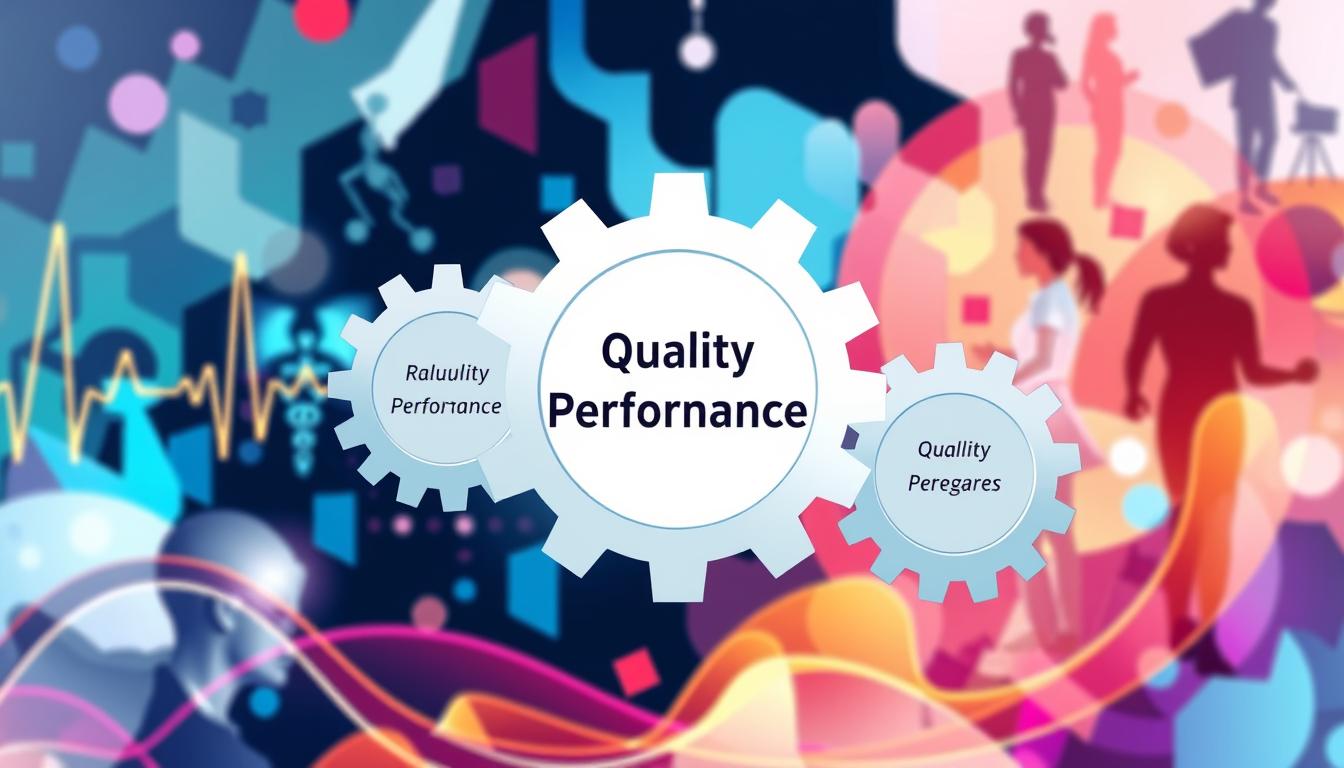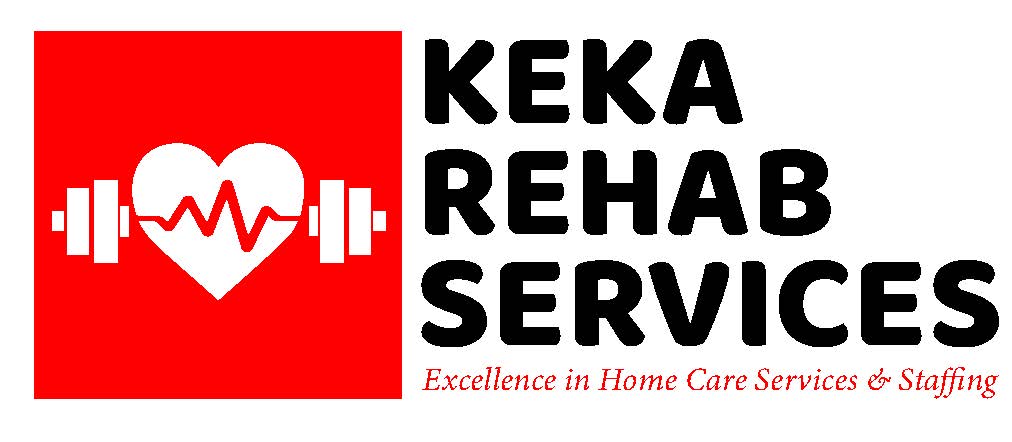Did you know there are over 580 measures for physical medicine and rehab? These cover many conditions, such as stroke and arthritis. This large collection of tools shows how important it is to measure patients’ rehab performance.
Healthcare is changing, focusing more on how well patients do and recover. This is because we want to improve treatments and demonstrate their effectiveness. With better ways to find and treat cancer, more people need special rehab care.
Rehab helps people get back to living well by improving their function and reducing disability. Doctors use different methods to check on patients’ progress. This information allows them make better treatment plans and monitor their progress.
Key Takeaways
- The Rehabilitation Measures Database offers extensive resources for tracking patient outcomes
- Value-based care is driving the focus on measurable rehabilitation effectiveness.
- Cancer survivors often require specialized rehabilitation interventions
- Various clinical outcome assessments help tailor treatment plans
- Patient-reported outcomes are crucial for understanding treatment effectiveness
Understanding Rehabilitation Success Metrics
Measuring success in rehab is key to good care. It shows how well treatments work and helps doctors make plans and set goals for patients.
Defining Clinical Outcomes
Clinical outcomes are changes in health that result from medical help. In rehab, they look at how well patients can do things independently. The Functional Independence Measure (FIM®) measures 13 motor and 5 cognitive tasks. Scores range from 18 to 126.
Importance of Measurable Results
Measurable results give precise data on patient progress. For example, FIM® scores of 60 and 80 mean patients need 4 and 2 hours of help daily. These help doctors change treatment plans and set goals. Patient feedback, like the Australian Modification of the Client-Centred Rehabilitation Questionnaire, shows how well patients are doing.
Value-Based Healthcare Evolution
The healthcare world is moving toward value-based care, which focuses on patient results rather than the number of services provided. Tools like the Patient-Reported Outcomes Measurement Information System (PROMIS) 29 help determine whether care works well.
By using these metrics, rehab experts can provide better care. This care helps patients live better and do more things independently.
The Role of Clinical Outcomes in Rehabilitation
Rehabilitation helps patients get better and improves treatment quality. A study examined 293 patients, with an average age of 52 and 76% being women. They had many conditions, such as inflammatory diseases and pain, showing how complex rehab can be.
It’s key to measure how well patients do in rehab. The study found a median Pass Rate of 73% for specific tasks. But, rates varied a lot, from 11% to 100%, showing areas for better care.
Exercise programs in rehab are beneficial. They can last from 8 weeks to 4 years. Patients have shown big improvements in walking and breathing.
The quality of rehab matters a lot. Some studies found no strong link between rehab quality and patient results. However others showed that exercise can help people with chronic diseases. This means rehab needs to be tailored to each person.
Healthcare workers face many challenges in rehab, especially with patients who have many health issues. Studies suggest that focusing on daily tasks might help more than other methods. By putting patients first and continuously checking how they’re doing, rehab can be improved and made more effective.
Merit-Based Incentive Payment System (MIPS) Overview
The Merit-Based Incentive Payment System (MIPS) checks how well rehab works. Physical therapists joined MIPS in 2019. This significant change helps measure how well rehab works better. It also makes treatment and care better for patients everywhere.
Quality Performance Categories
MIPS has four main areas: Quality, Improvement Activities, Promoting Interoperability, and Cost. Each area helps assess the effectiveness of rehab. The Quality area, for example, examines how well care is provided, how patients feel, and how well they do.

Payment Adjustments and Rewards
MIPS scores range from 0 to 100 points. The higher the score, the better the payment. This system pushes providers to improve care and patient results. Physical therapy has seen more money come in, with some receiving $3-$8 more per unit.
Impact on Healthcare Providers
MIPS has a significant effect on healthcare providers. To join, providers must meet specific rules. These include billing Medicare for over $90,000 and caring for over 200 Medicare patients. Small practices are given special rules to ensure they’re judged relatively. This system helps providers build strong patient relationships and keep patients involved in care, which improves rehab results.
Patient-Reported Outcomes and Assessment Tools
Rehabilitation centres use many tools to see how patients are doing. These tools help track progress and guide treatment plans. Let’s look at some vital assessment tools used in rehabilitation.
Functional Independence Measure (FIM)
The FIM is a standard rehabilitation tool. It checks how much help a patient needs with daily tasks, examining motor and cognitive functions to give a full picture of progress.
Barthel Index Applications
The Barthel Index examines motor function. It is simpler than the FIM but still provides useful insights. It is often used in stroke rehab and care for older adults.
Quality of Life Measurements
Quality of life scales, like the SF-36®, measure many aspects of a patient’s life. These tools help doctors see how well rehab is working. From 2005 to 2017, 45% of clinical trials used patient-reported outcomes.
Many hospitals have started using these tools. For example, Cincinnati Children’s Hospital Medical Center asked 75% of patients to complete these measures. These tools help track progress and personalize treatment plans.
Clinical Outcomes in Rehabilitation: Key Performance Indicators
Tracking key performance indicators (KPIs) is key for checking how well patients recover. These numbers help doctors see if treatments are working well. They also help make care better for everyone.
Clinical outcomes measure how well patients can perform daily tasks. This means improving their mobility, strength, and ability to perform daily tasks. Studies on stroke patients have shown that following certain KPIs can help them live longer and perform better.
- Scheduling optimization
- Resource management
- Average daily census
- Length of stay
Patient happiness and involvement are essential. They help make patients feel good and get more people to come. Places caring for patients often check how happy patients are daily, week, and month.
Important numbers in substance abuse programs are the extent to which patients are involved and how well they get along with their therapists. These numbers help determine whether the program is working and can also help obtain more money for treatment.
By examining these KPIs, rehab centres can help patients get better faster. They can also improve treatments and their staff’s performance, ensuring that patient care continues to improve.
Comprehensive Rehabilitation Outcome Measurement
It is important to measure how well people recover from rehab. The Comprehensive Rehabilitation Outcome Measurement Scale (CROMS) is a new tool for this purpose. It has 32 items that people with disabilities can complete themselves.
Multi-disciplinary Assessment Approaches
CROMS was made by many experts working together. They are physiotherapists, occupational therapists, and more. This way, they can see how patients are doing. The scale is very reliable, with a score of 0.93.

Cultural Compatibility Factors
CROMS is made for places with less money, not just Western countries. It was tested in two languages to ensure its universal use, making it great for checking people’s performance regardless of their location.
Cost-Efficiency Considerations
CROMS is free and easy to use. You don’t need to pay for training or special software, making it easy for doctors and nurses to use it everywhere.
CROMS is a big step forward in rehab. It measures how well people get better by examining how patients feel and what professionals see.
Therapeutic Interventions and Evidence-Based Practices
Evidence-based practices are key to better patient care. However, only 55% of clients get the treatments they need, which shows that we need to improve our use of these practices.
Healthcare workers can use the READ Model to select the best treatments. This model helps ensure clients receive the best care. It also allows therapists choose the right treatments and monitor them often to meet client goals.
Therapists can use the latest research to help their patients. They can consult the American Journal of Occupational Therapy and other resources. By using these, they can improve treatments and help patients get better faster.
Over the last ten years, more research has greatly improved physical therapy. Over 700 systematic reviews have been published. Keeping up with new research can improve one’s work.
It’s essential to be open with patients about treatment doubts. Use the best research to make your decisions. This way, you help patients get better and improve care overall.
Patient Engagement and Treatment Compliance
Patient engagement is crucial for rehab success. A study showed that patients who feel more confident after therapy perform better, experience less pain, and need fewer therapy sessions.
This shows the importance of keeping patients involved for the best results.
Communication Strategies
Good communication helps patients get better. Doctors should talk clearly and personally to each patient. Tools online can make talking to doctors easier and better.
By talking better, doctors can make patients happier and keep them returning.
Progress Monitoring Methods
It’s essential to check on how patients are doing often. This keeps patients motivated and lets doctors change plans if needed. Studies say patients who are involved do better at managing their health.
Patient Education Programs
Teaching patients is key to their recovery. Good programs help patients better understand their health, allowing them to make smart health choices.
By using simple language and pictures, doctors can help patients more. This makes patients more involved and helps them get better faster.
When patients are involved in their care, they do better. Studies show that patients with chronic diseases live longer if they are involved. Doctors can help patients get better and stay better by using these methods.
Operational Excellence in Rehabilitation Centers
Rehabilitation centres strive to help patients get better. They work hard to ensure top-notch care, which makes patients feel better and perform better.
Scheduling Optimization
Getting the schedule right is very important. Centres need to make sure patients get enough therapy. They also need to use resources well.
Some places require patients to receive at least three hours of therapy daily to meet high standards.
Resource Management
It is key to use resources wisely. This means using staff, equipment, and space well. Many centres focus on training staff to be better.
Using new tech like EHRs can help save time. It makes things easier to manage.
Quality Control Measures
It is very important to check and improve quality. Centers track their performance to improve. They look at things like how often patients return to the hospital.
Some places have special teams to help with learning and getting better.
Working on these areas can improve centres, which will benefit patients and grow the field, which is expected to grow significantly by 2029. Being excellent helps make care better and more efficient.
Documentation and Data Management Systems
Tracking how well patients do in rehab needs sound records and data management systems. These tools help gather info from patients and therapists. They also track how well the rehab centre works.
Healthcare has started to focus on using data more. Over the past twenty years, making healthcare better and safer has become a big deal in health policy and research. This means using data to help patients get better care and see better results.
Electronic Health Records (EHRs) are key for managing how well patients do. The Health Information Technology for Economic and Clinical Health Act of 2009 helped get EHRs used more. This made healthcare better, safer, and more efficient. EHRs help rehab centres see how well patients are doing and track their progress.
Data networks and registries provide insights into improving rehab programs. For example, a study from 2002 to 2010 showed that patients improved over time. They became more independent from the start to the end of their stay and even after they left. This data helps find ways to improve rehab programs even further.
Good data management lets rehab centres:
- Keep an eye on how patients are doing
- Find the best ways to help patients
- Show how valuable their services are
- Make their outcomes even better
Using the latest record-keeping and data management, rehab centres can do better. They can give their patients the best care possible.
Building a Patient-Centered Recovery Plan
A patient-centred recovery plan is key for good rehabilitation. Studies show it leads to better results, less cost, and fewer hospital visits. It focuses on your needs, culture, and what you like to make a plan just for you.
Individual Goal Setting
Setting your own goals is the start of your recovery plan. Person-centred care helps you stick to your plan and feel better. Make sure your goals are doable, you can measure them, and they match what you want to achieve.
Progress Tracking Methods
It’s essential to keep track of your progress. The Adult Needs and Strengths Assessment (ANSA) can help with this in some places. Checking in often allows you to make changes to achieve the best results.
Outcome Evaluation Strategies
It’s crucial to check your progress. A study in 14 clinics showed significant improvements in care after training. This ensures that you receive better care that fits you and helps you in many areas of life.
